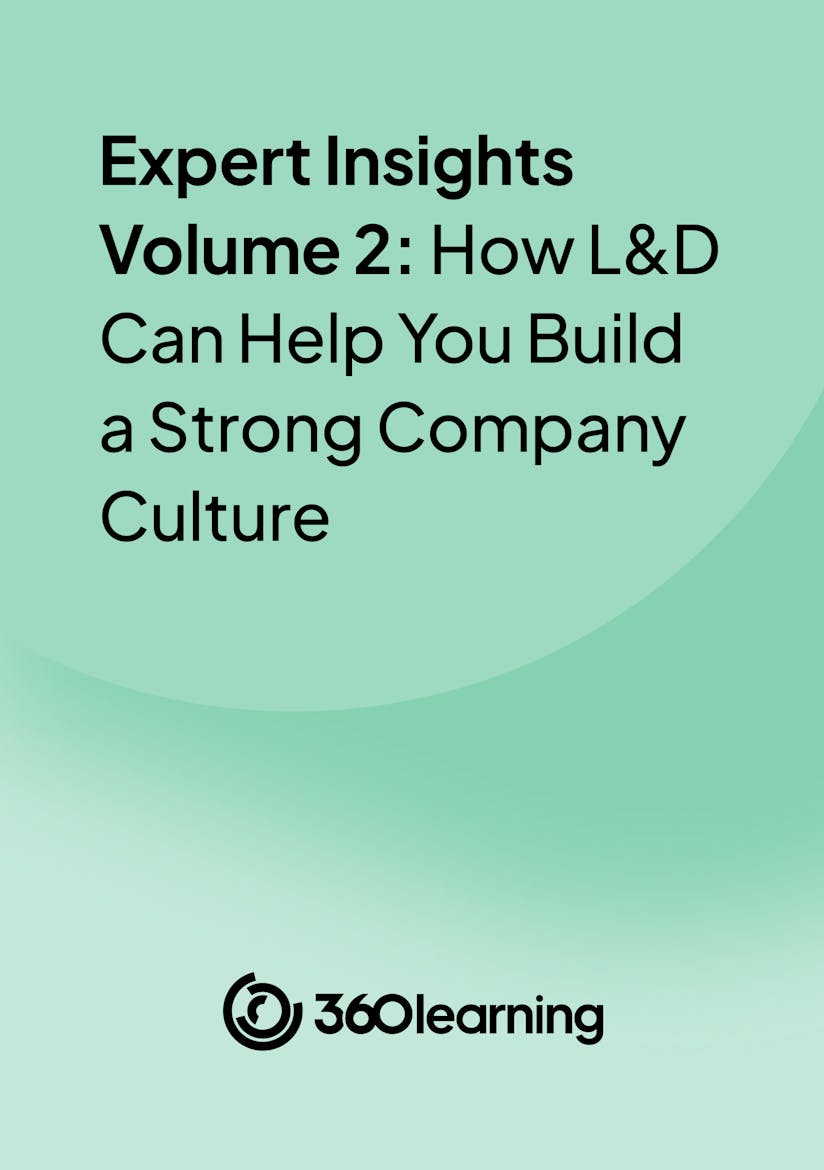
Many learning and development professionals hold organizational culture within their remit. But some find it’s an underdeveloped skill set in comparison with the delivery and provision of learning.
We need to recognize the importance of culture in the vast majority of our learning solutions. In this article, with insights from Lily Woi, Lead of Culture, Leadership, and Organizational Development at Nest Pensions, we explore organizational culture change, shifting the dial to a desired culture, and four pillars for developing culture-movement interventions.

What's company culture without L&D?
By providing your contact info, you agree to receive communications from 360Learning. You can opt-out at any time. For details, refer to our Privacy Policy.
Keep your action plan straightforward
The biggest key to organizational culture change is to keep your plan of action straightforward.
“Some businesses, leaders, and employees often seek elaborate frameworks and think they need a complex, multilayer solution to solve the culture problem before them,” says Lily.
“Some businesses, leaders, and employees often seek elaborate frameworks and think they need a complex, multilayer solution to solve the culture problem before them." - Lily Woi.
However, the simplest approach is often the most effective and accessible for our stakeholders to understand, remember, and deploy. Any plan will change once you start implementation. So, it’s time wasted if you design complex plans or frameworks that will change once deployed.
Effective culture change is also about iteration. Be sure to test your solutions and then adapt and optimize them to stay relevant to your industry’s broader trends and changes.
Shifting the dial to the desired state of culture
Planning an organization’s culture is challenging because it is a living part of the business.
Culture is constantly shaped and redefined by the behaviors, values, and attitudes of the company's people. You can guide your organizational culture by identifying, understanding, and influencing specific elements that will shift the dial.
“We can’t really plan culture, but we constantly guide and shape it by understanding what our current culture looks like, the desired state, and the gap between,” says Lily.
To start shifting the dial toward your company’s desired state of culture, identify the key drivers enforcing the current culture and work out how to change those influencers if they aren’t working or reinforce them if they are working.
Understanding how culture exists in your company
Engaging with employees is a great place to start understanding how culture exists in your organization.
“My main approach is always through conversation and observation and how those match the official communication, guidance, and statements made publicly,” says Lily.
“My main approach is always through conversation and observation and how those match the official communication, guidance, and statements made publicly."
For example, do an organization’s stated values translate into daily practices? How are leaders held accountable for upholding them, and what happens when they don’t?
Your organization will hold plenty of formal data to help you with your observations. These can include performance reviews, external interviews, and wellness and sickness data. You can save a lot of time by leveraging this data to get an insight into the current state of your company’s culture.
Lily’s four pillars for designing culture-shifting interventions
When designing interventions to shift and sustain culture change, Lily applies the following four pillars to ensure they achieve the desired state.
- Mindset: Is there the right psychological development in the organization to drive the right behaviors or actions?
- Abilities: Do the people within a company have the skills and abilities needed to operate in the desired culture?
- Process: Does the business have the right processes to empower culture change?
- Structure: Will the operating model, organization structure, or governance reinforce the culture change you seek?
“When applying the lens of mindest or abilities, I look at what training, communication, coaching, soft skills development, or peer support to introduce,” says Lily.
“When applying the lens of mindest or abilities, I look at what training, communication, coaching, soft skills development, or peer support to introduce."
Reaching the desired state of culture
To measure the impact of culture change, you need to measure whether the current reality reflects the desired culture and whether it is consistent across the organization.
At the outset of your culture change journey, there needs to be agreement on what needs to change and what good looks like within your organization’s context—all companies are different.
You will need to delve into and get alignment on why everyone thinks the change will bring you to the desired state and how that will improve performance. From here, you can identify which metrics you will measure and how.
Explore further insights on organizational culture by checking out the episode of The L&D Podcast: Organizational Culture Change with Lily Woi
Want more peer insights on transforming workplace learning? Sign up to become a member of the L&D Collective. Or you can subscribe below to our weekly newsletter to receive our latest posts directly in your inbox.




